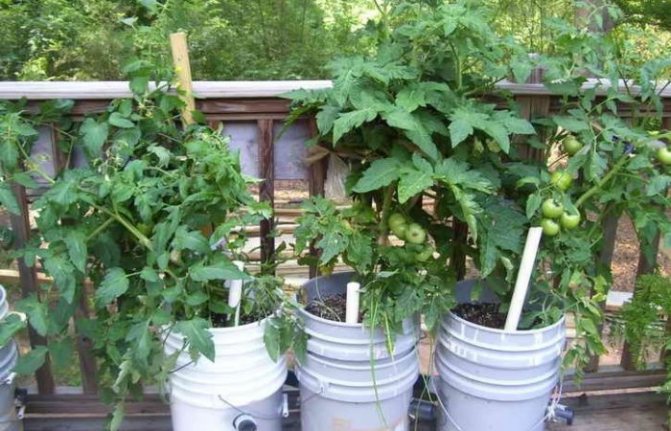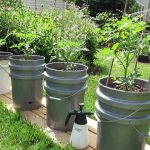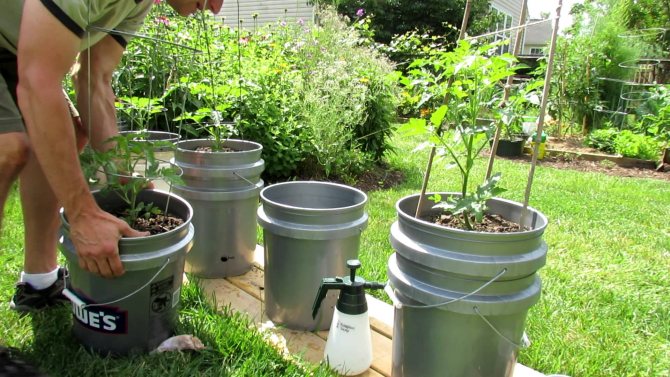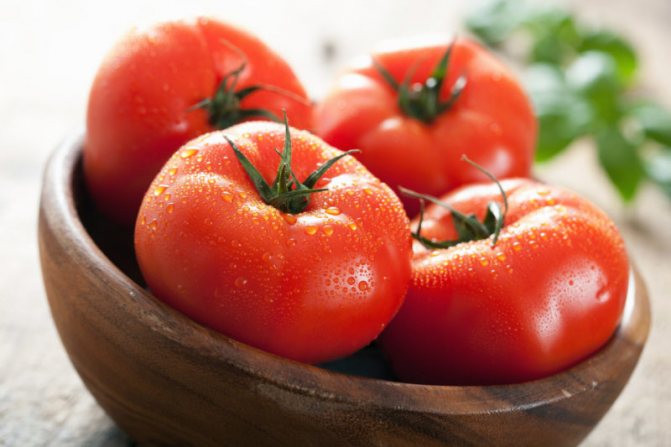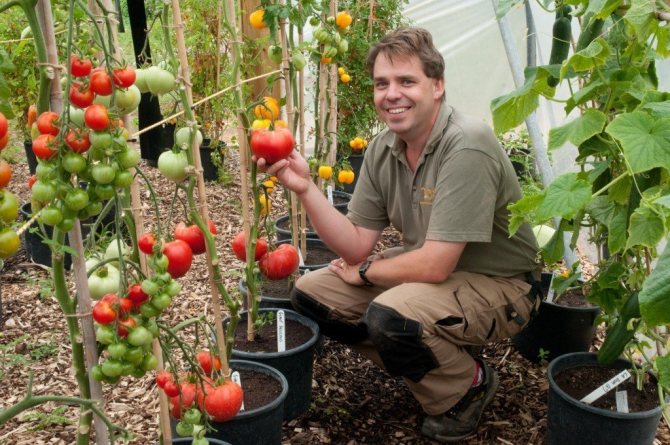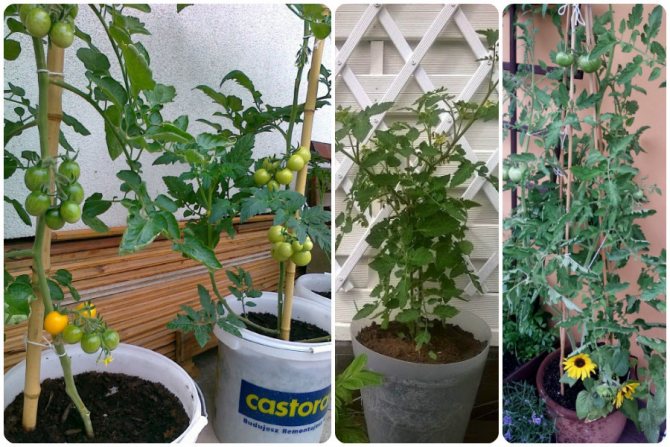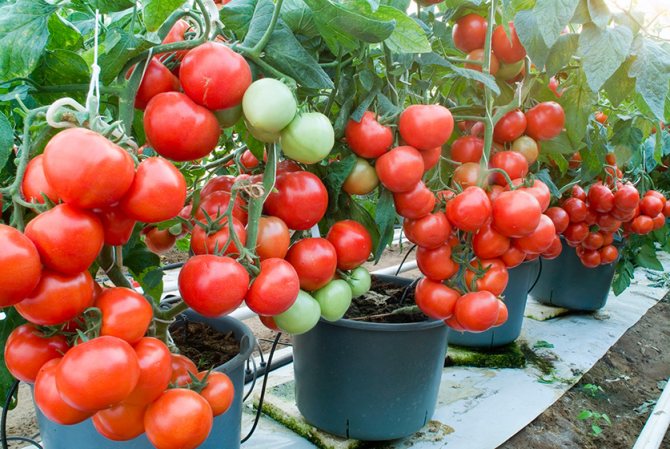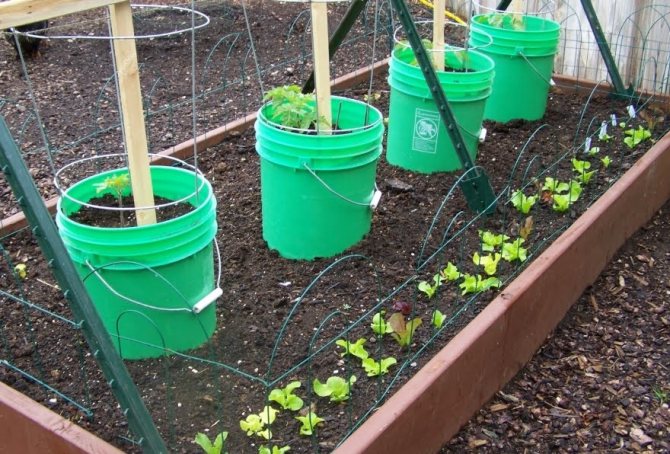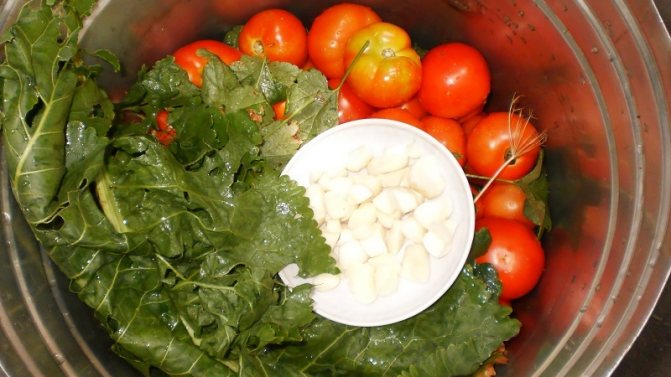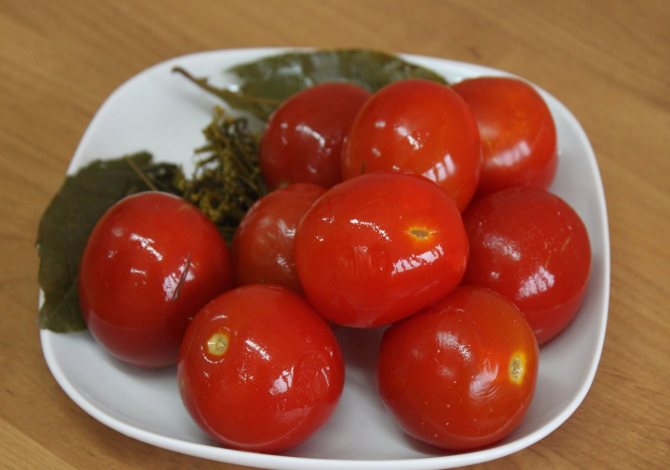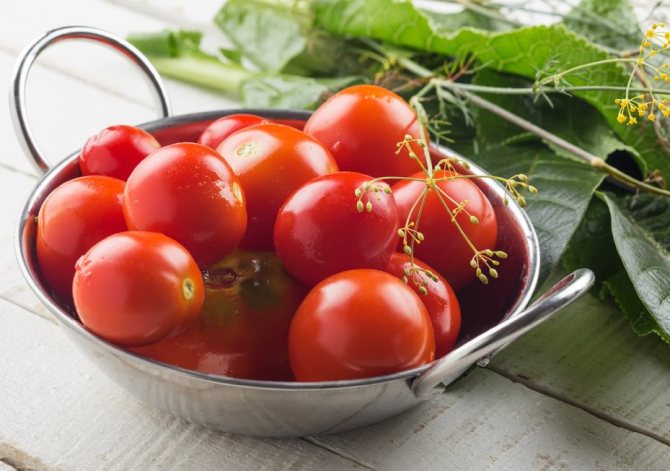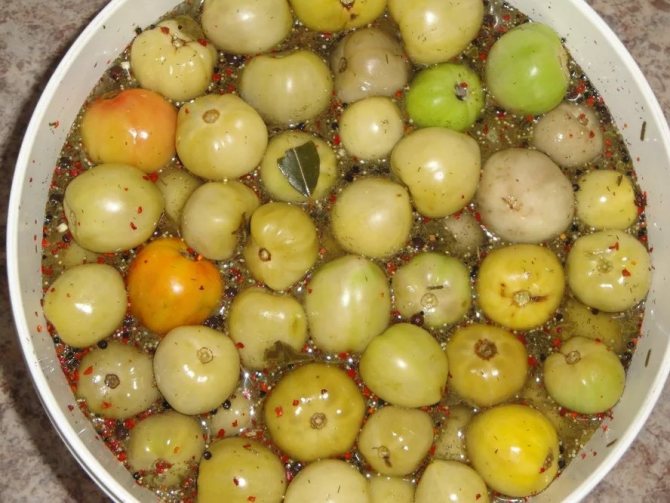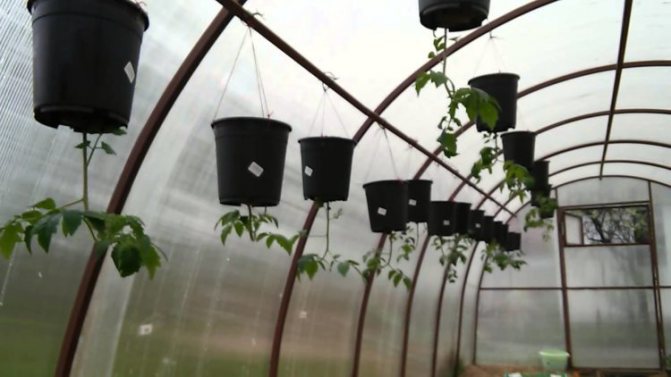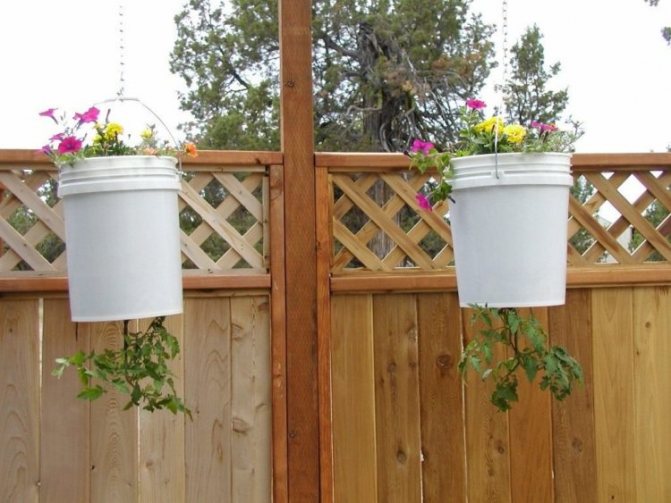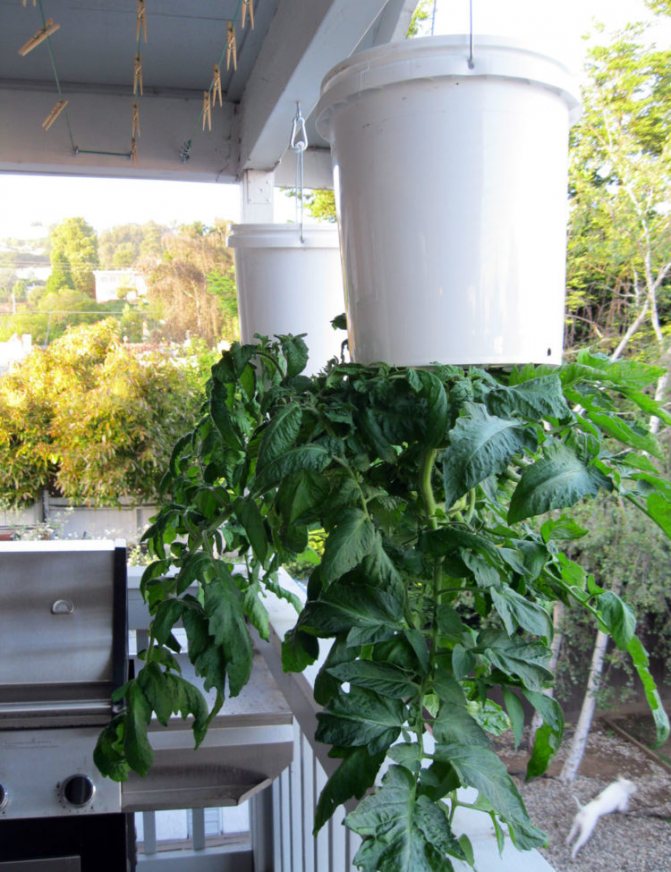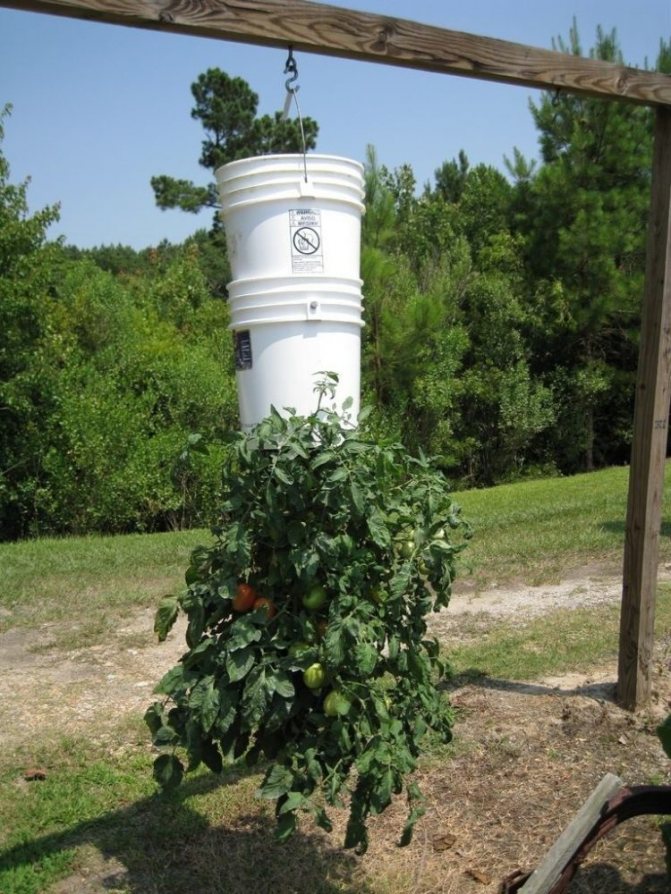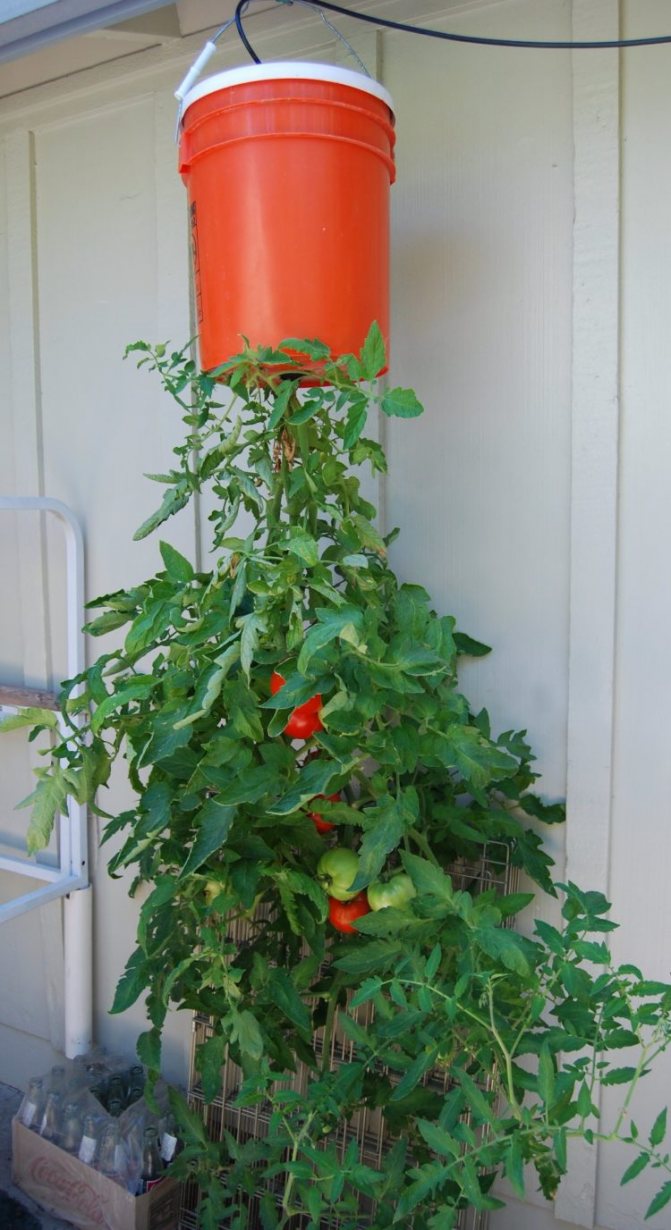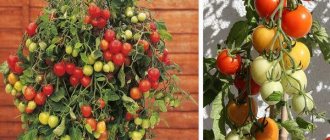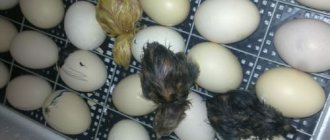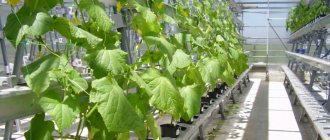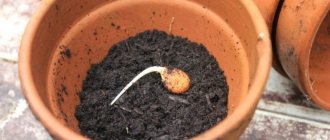For a long time, experienced gardeners often keep old or unnecessary buckets. Many people ask the question: For what purpose and for what purpose do they do it? It's very simple - for growing vegetables. For a long time, gardeners have been using an efficient method of growing tomatoes in buckets. Some people are suspicious of this method, but in the end, the result exceeds all expectations.
From the point of view of gardeners, an excellent result from growing tomatoes in buckets is achieved by instantly heating the soil and water. It is most convenient to care for such plants and much easier to collect than a garden specimen. Watering and added fertilizers reach the very roots, unlike planted plants in the open field or in a greenhouse.
The soil in the containers must be changed once a year, however, this procedure does not bother gardeners. There is nothing difficult in replacing the old earth in the tank with a new one.
The harvest can be obtained ahead of time by growing tomatoes in buckets. Tomatoes in buckets, regardless of varieties, will bear high-quality fruits that are not prone to cracking. Tomato fruits will have a firmer structure than fruits grown in a vegetable garden or greenhouse.
Pros and cons of the upside-down planting method
Certainly to resort to one or another method of planting and growing plants, you need to weigh the pros and cons, what is more - minuses or pluses in this difficult experiment.
Pros:
- Tomatoes are much less attacked by various kinds of underground pests, in particular, such a pest as bears.
- There is a convenient opportunity to grow plants annually on the so-called "renewed" soil (as you know, this is an excellent prevention of fungal diseases and phytophthora).
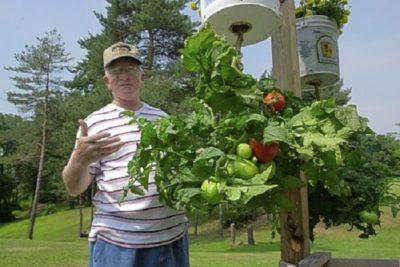
A tangible increase in the total yield of plantings (this is facilitated by the factors that the soil and water in buckets warm up much faster, therefore, the plant grows and strengthens at a rapid pace).- Reduced harvest time.
- Favorable exploitation of fertilizers (compost and humus) when preparing earthen mixtures due to a significant reduction in their required volume.
- Tomatoes in containers such as buckets take up much less space, which makes life easier for gardeners and the ability to plant more crops, and the buckets can be moved around as they please.
- Such a harmful factor as weeds disappears.
- Fertilizers for increasing fertility completely fall to the roots.
- The threat of expanding infections is decreasing.
- Ripening of tomatoes occurs in buckets two to three weeks earlier.
- When watering, the water goes directly to the root system of the plants, and does not spread over the soil surface.
- During periods of heavy rainfall, buckets can be placed under a roof or moved to other isolated areas.
Reference. Growing tomatoes upside down is an extraordinary way to grow and decorate your own plot, while they do not need a constant garter or any other special grooming.
This planting method also has disadvantages, namely:
- Increased labor intensity: you need to spend a lot of effort, patience and painstaking work for this method of growing tomatoes.
- The use of a large number of buckets (containers) without a bottom.
- Not all varieties of tomatoes can be grown in buckets, but only hybrids and varieties with weak foliage and a dense root system (these include many types of balcony tomatoes).
- The irrigation process needs to be done much more often than for tomatoes planted in open ground, because the roots in buckets do not have access to open ground.
- You need to pay special attention to watering, otherwise the tomatoes can easily die. They should be watered carefully, evenly distributing the amount of moisture supplied to the entire depth of the soil and at the same time, not flooding too much, since tomatoes may disappear due to lack of oxygen.
- You also need to pay attention to the temperature, but only if the buckets for growing were chosen in black, dark brown or dark green. To prevent the rhizomes from overheating in the heat, the buckets must be wrapped in light material, constantly shaded and sprayed with cold water.
What can be served to the table
In winter, pickled and beautifully decorated vegetables can be a real decoration of the festive table, not to mention the possibility of using them as a snack for more modest events. They can be served with mashed potatoes, vegetable casseroles, or as an ingredient in a pizza or pie. Sometimes salted red tomatoes are used to prepare real masterpieces of first courses, like Siberian cabbage soup, and vegetable salads based on them.
Important! When using pickles when cooking, do not forget about the high salt content in them, which will also affect the taste of the cooked dishes. It is likely that some of them will not need to be salted at all.
Preparation
Capacities
When preparing materials for planting tomatoes, first of all, you should pay attention to:
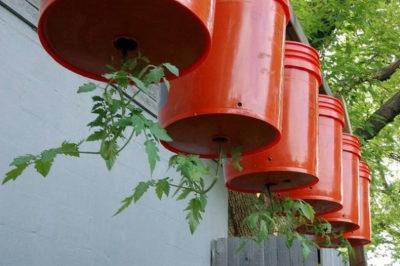

- Bucket color. It is better that they are light colors, but if there are none, then dark buckets should be wrapped with light (white) material so that their rhizomes do not overheat.
- The material from which the buckets are made not important at all, they can be made of plastic or metal.
- Volume. Buckets must be taken with a volume of at least 10 liters.
- Quality. The more unusable and used the bucket looks, the better. Numerous cracks, chipping and holes improve the evaporation of excess water and ventilate the root system of tomatoes. If new buckets are used, a large number of breaks and holes must be made in the bottom and along their edges.
Important! For the method of planting tomatoes upside down, you will need buckets with a hole diameter in the bottom of the container about 5-10 centimeters.
Seed
Tomato seeds need to be sorted out thoroughly to select the largest and most intact before sowing in buckets. It is possible to buy seeds in a special store or prepare them in advance by yourself. To this end, even in the fall, it is necessary to leave several of the largest and most ripe tomatoes. Last year's seeds are best for growing seedlings.
In the case of using purchased seeds, it is imperative to monitor the expiration date. The seedlings will germinate much better if the seeds are with the shortest shelf life.
Self-prepared seeds must be thoroughly warmed up with a lamp and treated with a solution of potassium permanganate. Purchased seeds are most often already treated with such a special solution.
You can learn more about preparing tomato seeds for sowing here.
The rest of the material
In order to increase the yield of tomatoes, it is best to prepare a special soil for tomatoes in advance. before planting them.
- In the fall, you need to fill the buckets with humus. To create humus, we need:
- ordinary land from the garden (it is best to take from cucumber beds);
- ash.
- Then you need to mix the above components and place them in buckets. It will not be superfluous to add special substances to make the processes in the soil more intense.
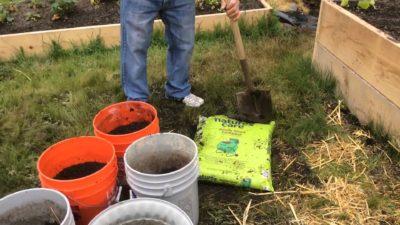

The resulting mixture should be filled with water and left for the whole winter right in the buckets in the greenhouse.- They can be placed in any convenient way or dug into the ground to a depth of about 20 centimeters.
- You constantly need to pour snow into the buckets so that the earth is completely saturated. When the snow melts in spring, the soil will be qualitatively saturated with melt water.
- As for the soil, you can also pour expanded clay into the buckets or cover it with small pieces of old planks, so that there is necessarily air access to the root system of the tomatoes. Next, you need to start putting:
- the first layer in the form of hay, grass, food residues;
- the second layer is sand with the addition of two glasses of ash;
- the top layer is garden soil.
- It is necessary to water the ground with abundant warm water. You can also use the process of slaking lime, which will lead to strong heating and pour boiling water over it. Such warming of the earth will allow planting seedlings and harvesting much better quality and earlier in time.
- After several days, you need to plant two or three plants in one bucket with a volume of about ten liters.
Reference! You can fertilize with only one top dressing with mineral fertilizer before the beginning of flowering tomatoes. You can also use a fertilizer like magnesium sulfate. It should be applied in early spring when the snow begins to melt or directly into the hole when planting, about one tablespoon per bucket of earth.
Salted tomatoes with mustard in a saucepan
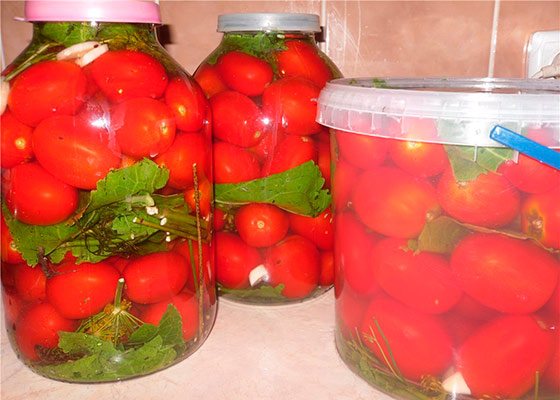

How to make such a salting at home? So, take:
- medium-sized brown tomatoes - 8-9 kg;
- water - 5.5 l;
- black currant sheets;
- salt - 180 g;
- a mixture of peppers - 5 g (half a teaspoon);
- lavrushka - 6 leaves;
- mustard powder - 10 heaped teaspoons;
- ground hot pepper - 1/2 teaspoon.
Process:
So, put all the spices in a clean container on the bottom, lay the tomatoes on the lavrushka, shifting each layer with currant leaves. Bring water to a boil, add salt.
As soon as the dry ingredient dissolves, remove the brine from the heat, let it cool, add the mustard and pour the marinade over the vegetables to the top.
Cover the top with a lid and put it under oppression.
Ten days later, the mustard spicy snack will be ready to eat.
How to grow upside down: step by step instructions
- For growing tomatoes in this way, it is best to use plastic buckets with a volume of about 20 liters with a handle.
- The bottom of the plastic bucket must be drilled to make a hole about 8 cm in diameter and placed on two supports to make it easier to reach the bottom.
- Along the walls of the container, you need to lay out a special soil with fertilizers. The lower part of the plant must be carefully pulled through the hole, and a stalk of about 4-5 cm should be left outside. Thus, the agriculture will be fixed.
- Then you need to gradually fill the bucket with soil, and the substrate should be compacted with high quality, sprinkling the root of the plant about 5-6 cm.
- Next, add another layer of compost.
- The bucket should again be sprinkled with soil so that the level of the substrate is several centimeters lower than the edges of the container.
- After that, the bucket must be hung in the place where it will be permanently located.
- It is necessary to water the substrate so abundantly that water comes out of all the holes in the bottom of the bucket. If after watering the ground has settled a little, then this is quite normal.
The bucket can be covered with a lid, but not tightly to avoid excessive evaporation. Remove the cover before watering.
Helpful hints
For beginners, even the simplest salting process can be a daunting task, but over time, every housewife will notice some nuances that make it much easier.
The most common recommendations for the preparation of such blanks include the following:
- if you want the process of pickling tomatoes to go faster, you need to make a cruciform incision at the base of the fruit;
- for greater aroma of the preparation, it is advisable to pre-dry the dill and parsley, so that during the salting process they will reveal their full aromatic potential;
- the fruits of ripe and soft varieties of tomatoes should preferably be salted in containers with a volume of no more than 50 liters, and hard or green tomatoes - in wooden barrels;
- in order not to mash ripe fruits, they are necessarily laid out in layers, each of which must be covered with leaves of cherry, horseradish, currant, basil, dill and other spicy herbs;
- the optimal salting time is 2 weeks, after which it is advisable to transfer the tomatoes to another clean container or roll them up in jars for longer storage.
Photo
Here you can see a photo of tomatoes upside down in buckets:
How to grow a tomato bush in an inverted bucket
Tomatoes upside down
This growing technique was invented by gardeners from Europe. In our country, this technique has been simplified, but it has not become less effective.
Gardeners who have already used this method claim that its use has a positive effect on the yield indicator, and also helps to save usable space in a small suburban area. The suspended container can be placed in a place that is not suitable for planting. In addition, tomatoes grown in buckets can serve as a decorative element of a summer cottage.
How to care for tomatoes?
- Tomatoes need to be fed several times throughout the season.
- The greenhouse should be well ventilated, but the temperature should not exceed 30 degrees Celsius.
- It is necessary to weed and thin out the plants in time to avoid thickening.
- It is necessary to carefully water the very root of the tomatoes, without getting on the plant itself.
- Young tomato bushes need to be watered into the bucket itself, and already stronger plants should be poured feed and water into the bucket and under the bucket (if the buckets are dug in).
- Top dressing should be done three times per season.
Workpiece storage rules
Most pickles are almost immediately placed in the cellar or, in extreme cases, on the lower shelf of the refrigerator, however, the latter solution can be considered appropriate only with a small number of blanks. The ideal storage temperature in both situations is considered to be + 1 ... + 6 ° С. If there are no opportunities for long-term storage of salted tomatoes, then they can be preserved.
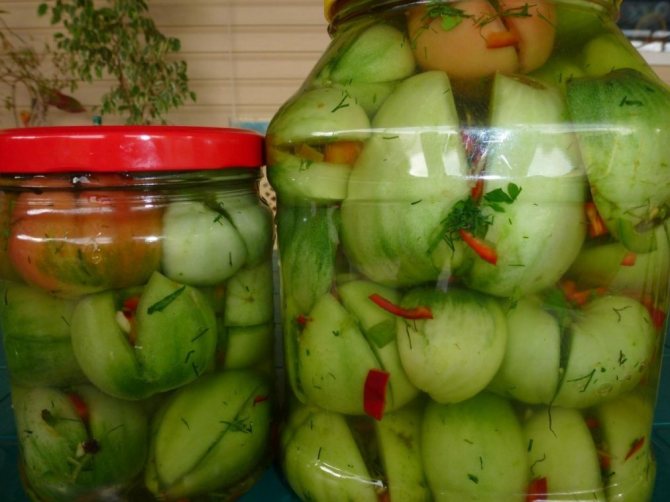

After five days of exposure in brine, it is drained, and the fruits themselves and all green seasonings used with them are washed with warm water. In this form, they fit into clean jars, and the previously drained brine is brought to a boil. At the end of the procedure, the tomatoes laid in jars must be poured with the prepared brine and rolled up. Of course, the shelf life of rolled pickles will be much longer than the shelf life of vegetables in a bucket.
Common mistakes when landing upside down
- Leaving errors. Overheating of the soil in buckets may occur during a too hot period due to excessively rapid evaporation of moisture. And when growing, many gardeners do the wrong watering, which can lead to the death of tomatoes in buckets. Bucket tomatoes need more frequent and regular watering than those grown outdoors.
- Excessive nitrogen fertilization. It is necessary to ensure that the tomatoes receive magnesium on time. With magnesium starvation, fertilizing with magnesium sulfate (0.5%) is carried out.
- Insufficient disease prevention. First of all, it is necessary to prevent the occurrence of diseases in tomatoes, and not to treat plants for diseases. There is no need to wait for symptoms of defeat and various injuries.
- Planting depth of tomato seeds. If the seeds are planted too deep in buckets, they may not sprout at all.
When growing tomatoes in buckets, gardeners get excellent yields. Everyone has the right to decide whether to use traditional methods or innovative technologies.
If you are interested in other methods of growing tomato seedlings, then we suggest learning about such methods as in bags, on two roots, without picking, in the Chinese way, in bottles, upside down, in pots, in peat pots and in a barrel.
What buckets can I use?
For growing tomatoes, buckets of any shape with a volume of at least 10 liters are used, so that the plant has a sufficient nutritional area. Crumpled, broken, with chipped enamel, no handles, leaking buckets, wooden bath tubs for water that are out of order are used.
It is better to use metal containers, since plastic does not like temperature changes and can withstand 1-2 seasons, and the tubs can dry out and fall apart. A sufficient number of holes must be made in the bottom for a good outflow of excess water during irrigation.
